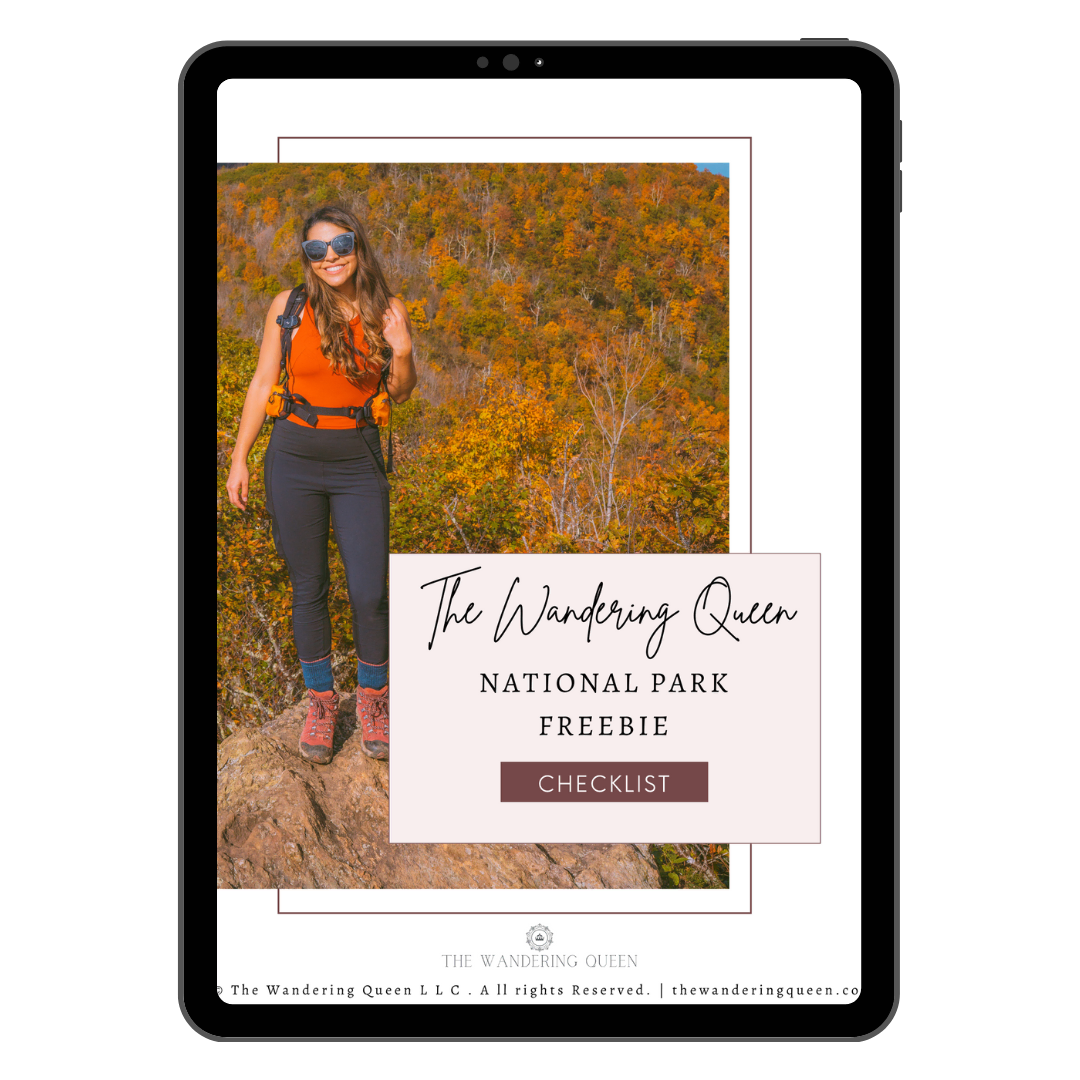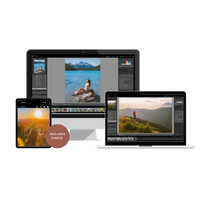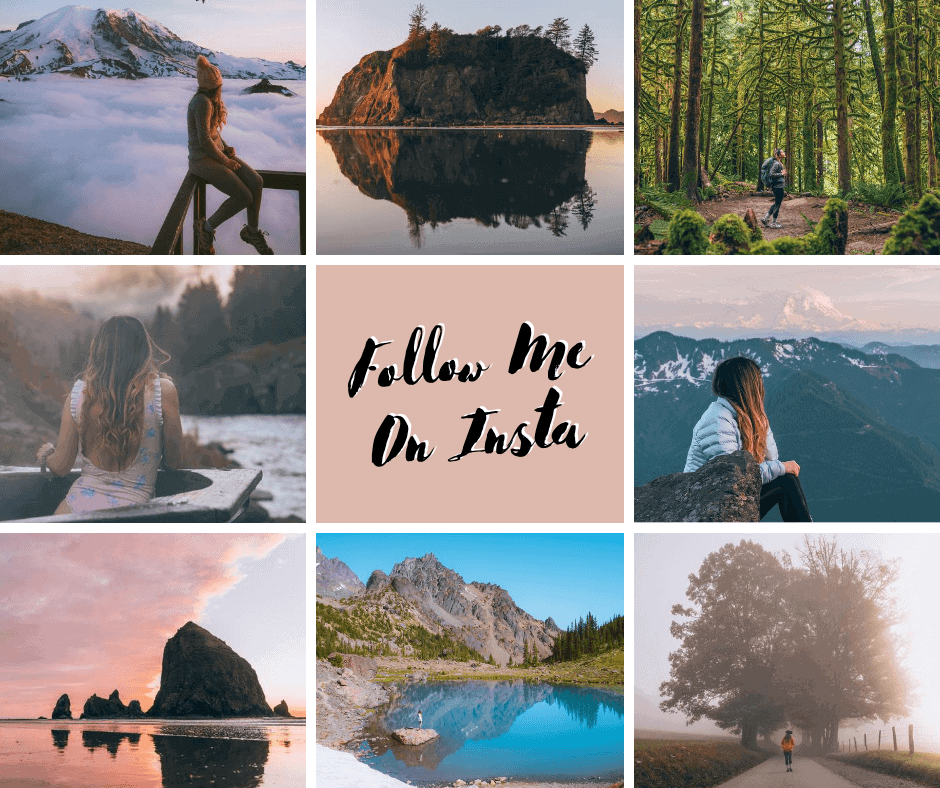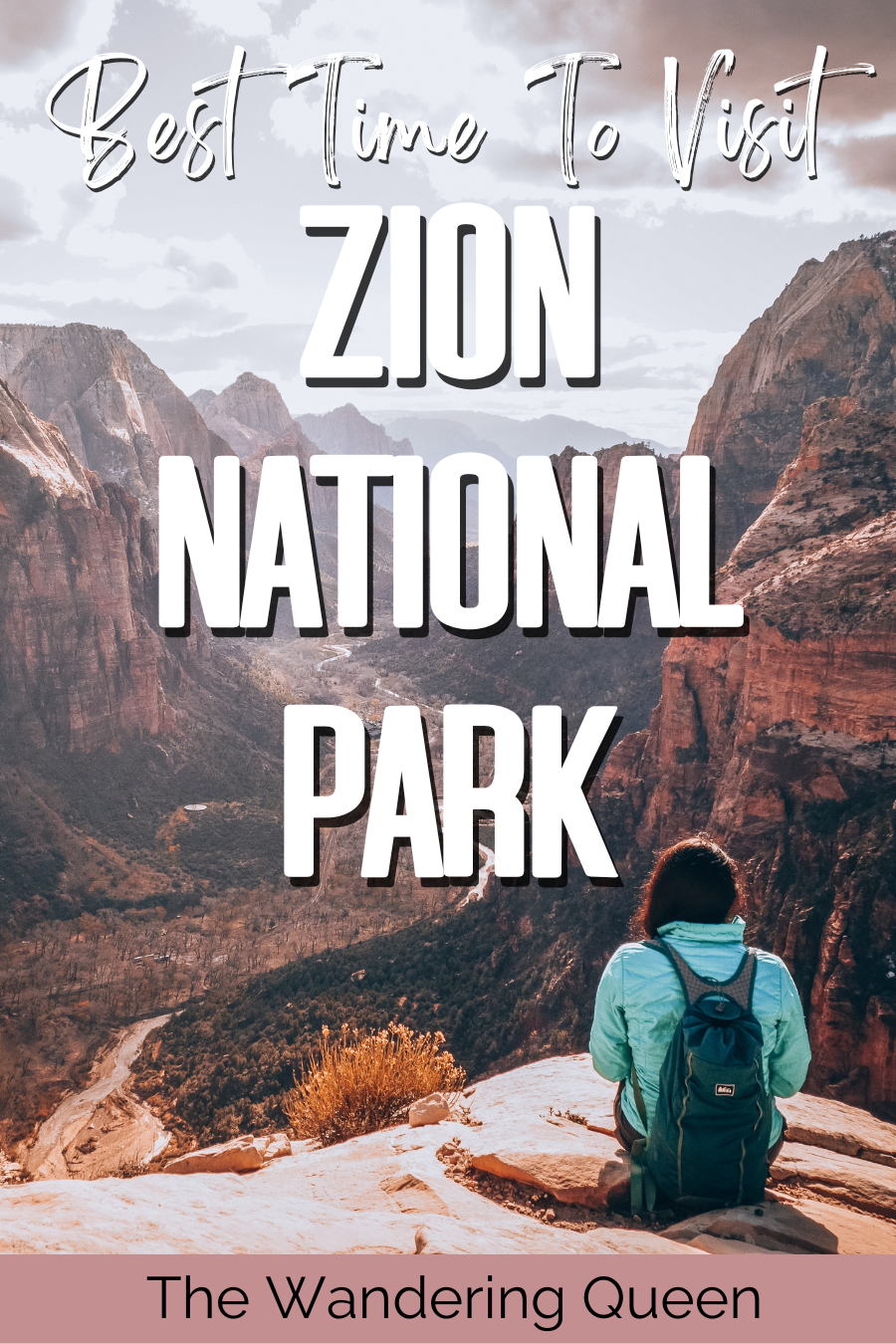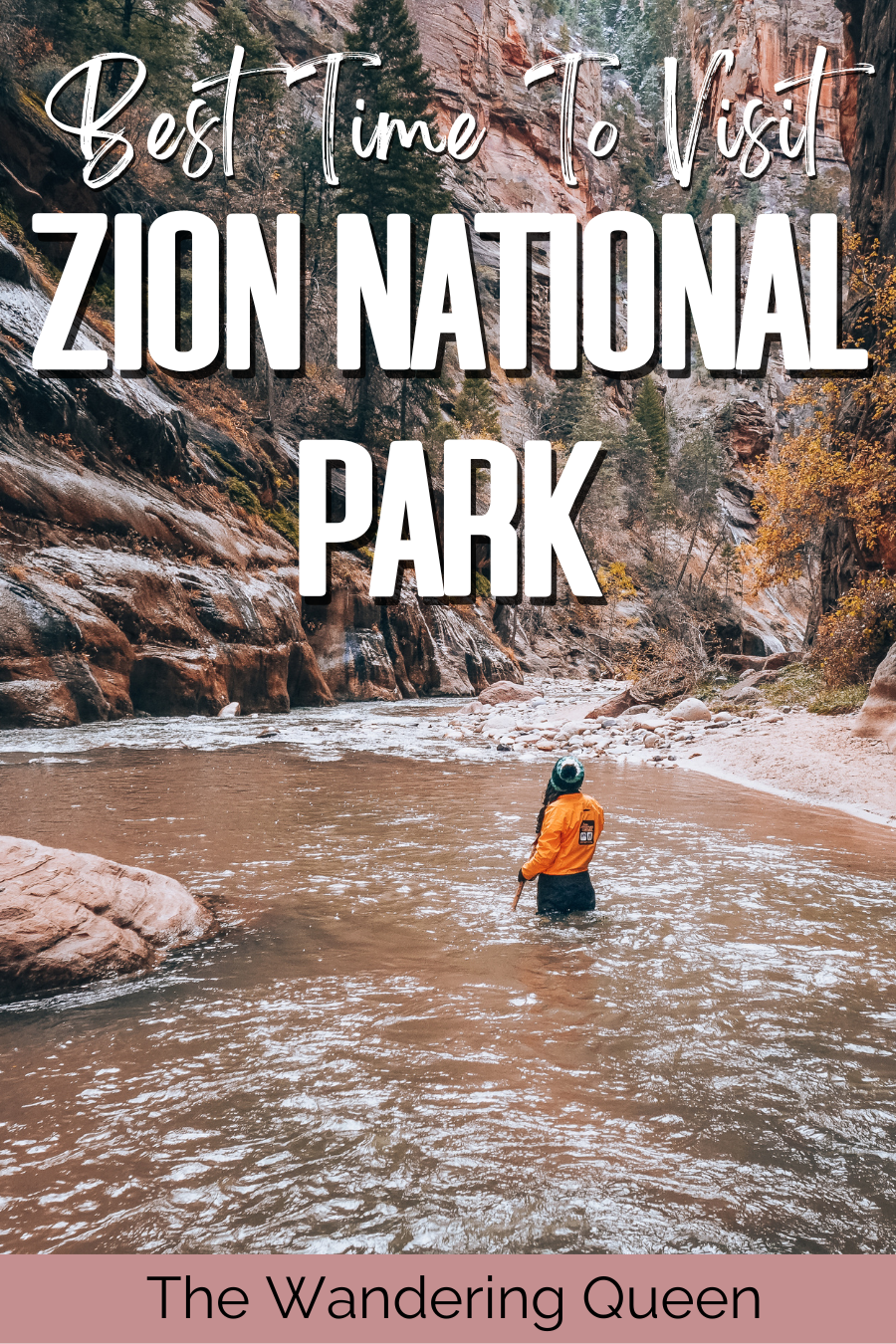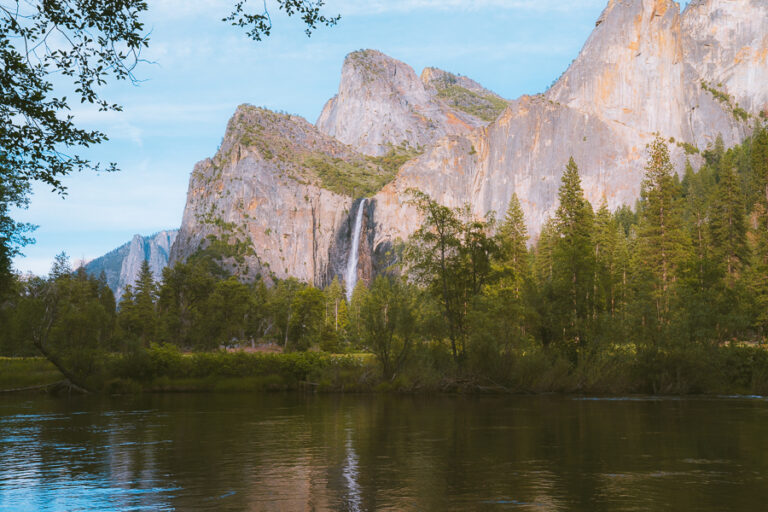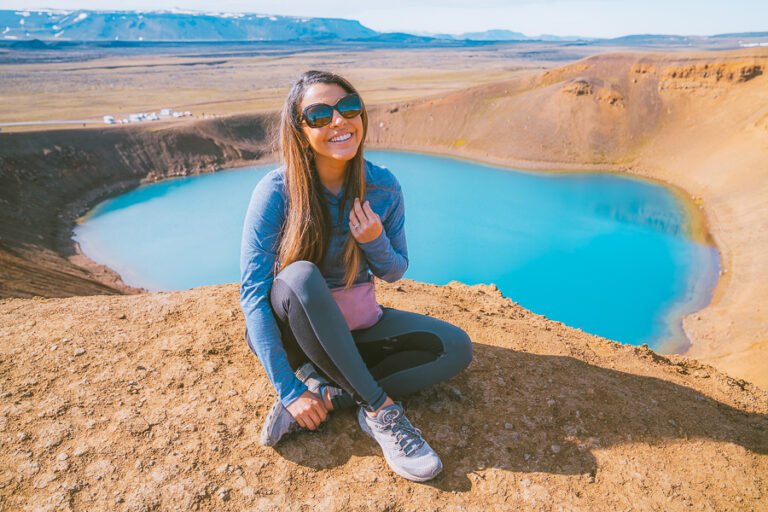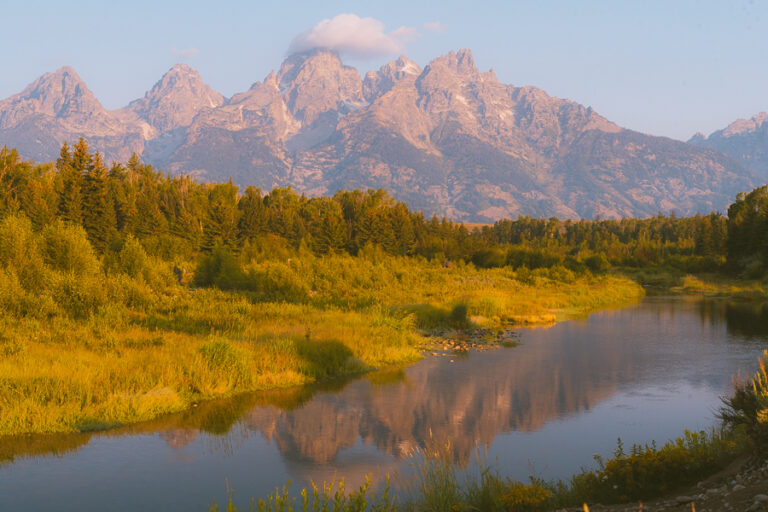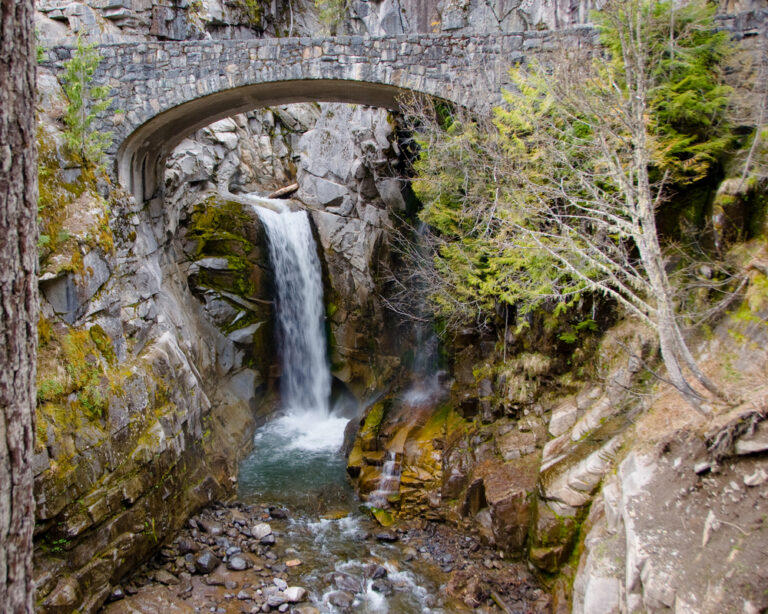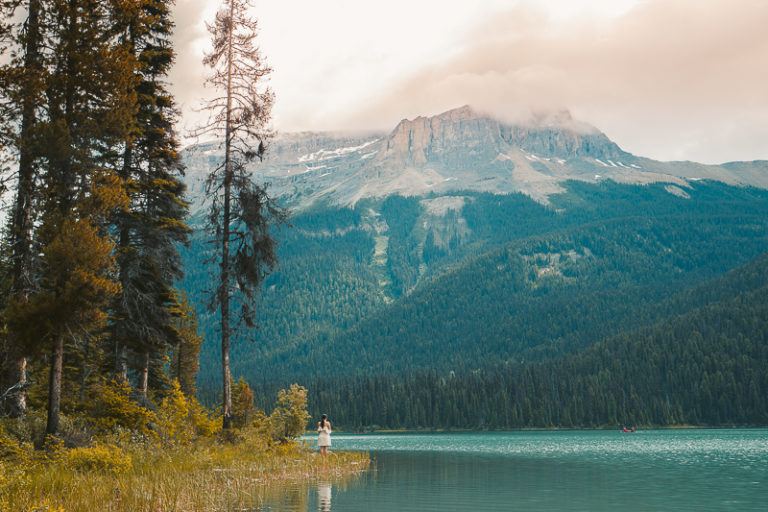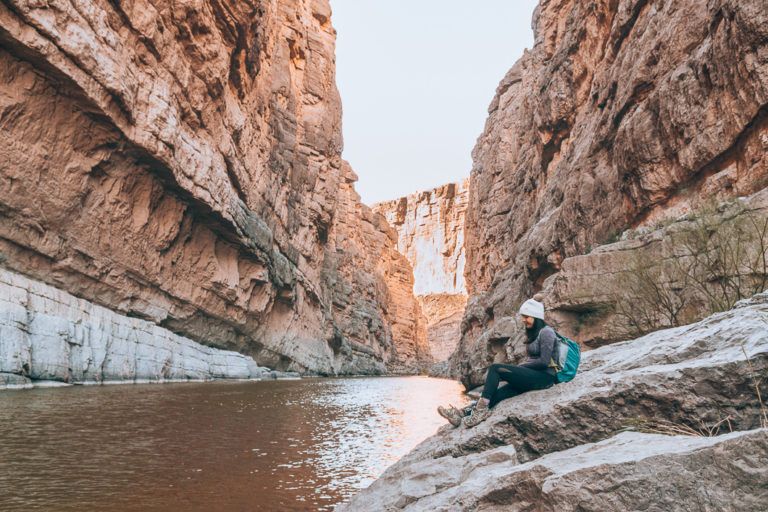Best Time to Visit Zion National Park | Season by Season
Dotted with stunning red rock formations, steep sandstone cliffs, and a river-carved canyon, Zion National Park is a haven for outdoor adventure in southern Utah. The park attracts over five million annual visitors, making it one of the most visited national parks in the US.
But when is the best time to visit Zion National Park, you may wonder. In this in-depth guide, you’ll find all you need to plan the perfect trip to Zion for every season.
You’ll find plenty of things to do in Zion National Park. However, some activities are more suitable for warmer weather, while others could be done in colder temperatures. So, without further ado, let’s explore the best time of year to go to Zion National Park.
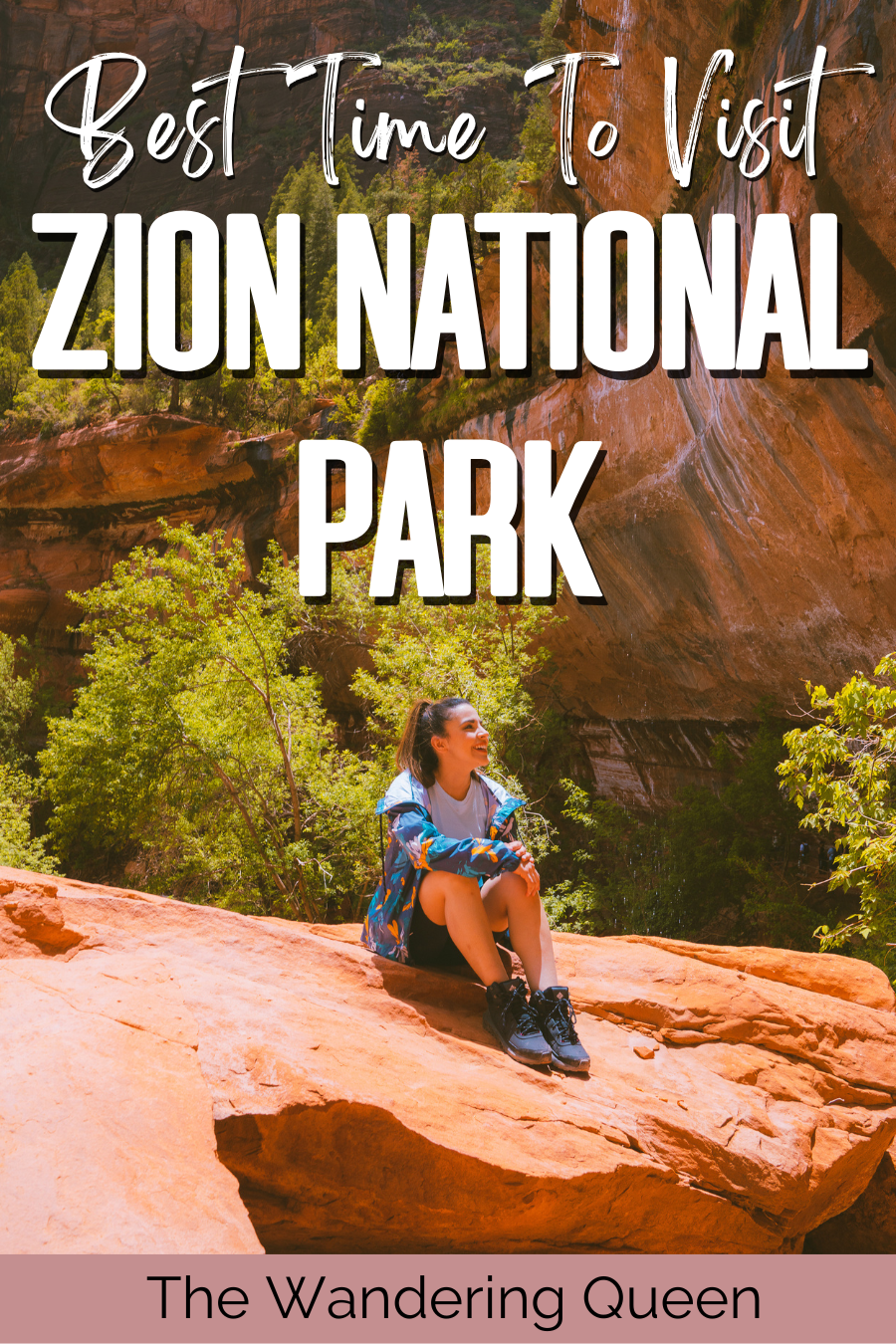
Disclosure: This post contains affiliate links. If you click one of them, I may receive a small commission (for which I am very grateful for) at no extra cost to you.
Zion National Park
Related Posts
How to Get to Zion National Park
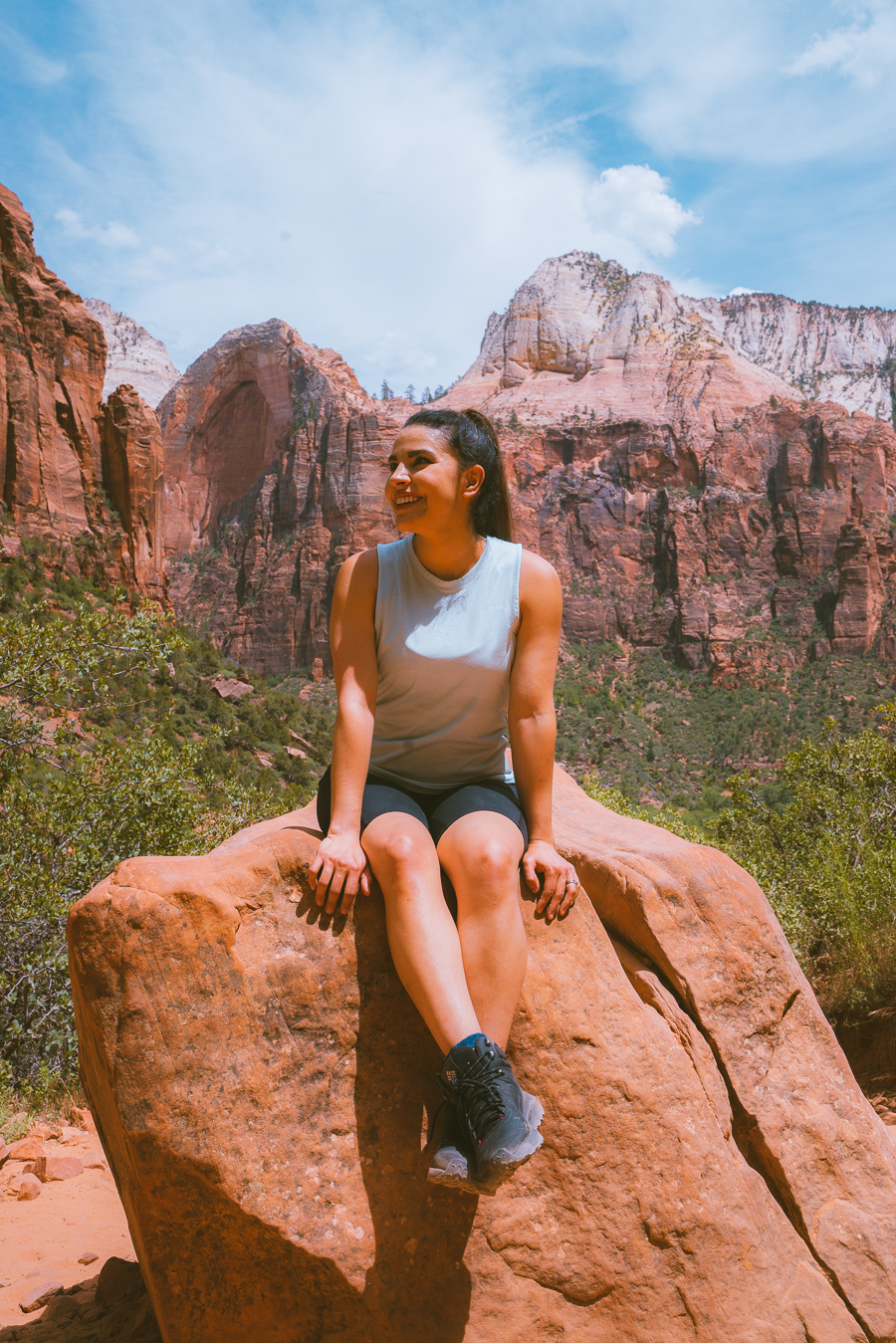
There are many ways to get to Zion. The national park is within a few hours’ drive from major cities like Las Vegas and Salt Lake City, which both have international airports. But if you’re coming from within the US, you can also fly into some of the nearby regional airports.
Have a look at these closest airports to Zion National Park, the driving time, and mileage:
- Harry Reid International Airport in Las Vegas: 3 hours 30 minutes (190 miles)
- Salt Lake City International Airport: 4 hours 10 minutes (274 miles)
- Cedar City Regional Airport: 25 minutes (21 miles)
- St. George Regional Airport: 50 minutes (45 miles)

Tip: Book a rental car to get from the airport to Zion National Park. This also gives you the freedom to explore other nearby Utah parks like Bryce Canyon.
Best Time to Go to Zion National Park
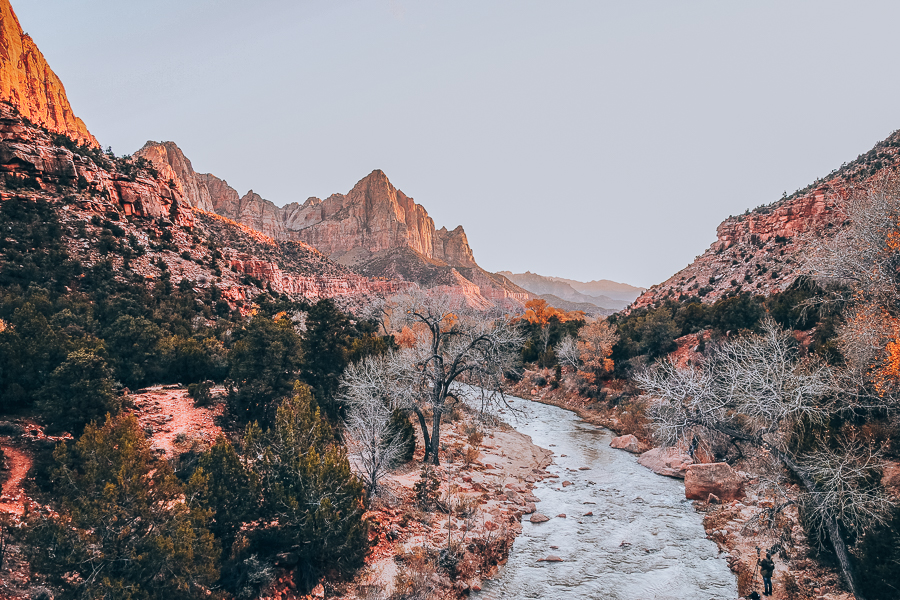
Summer is the busiest season, welcoming over half a million visitors each month. If you’re looking for mild weather and fewer crowds, then fall and spring are your best bets. These seasons also bring vibrant colors to the red landscape, making for a scenic day in Zion.
The national park is open year-round, so winter is also a good time to visit a less crowded Zion, but be prepared for the cold weather, and many hiking trails and roads may be closed.
Worst Time to Visit Zion National Park
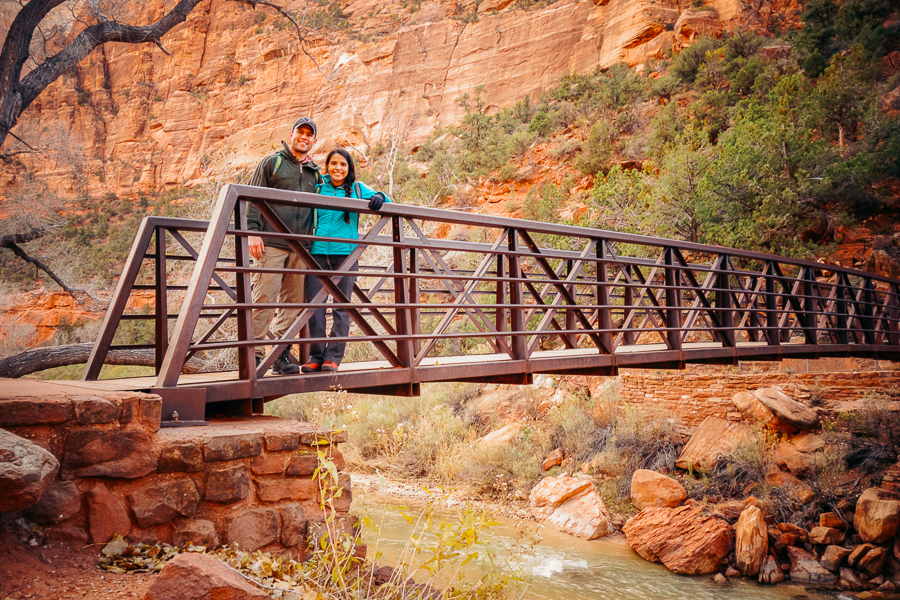
This highly depends on what you’re not prepared to face while visiting the park. In summer, you’ll experience frequent afternoon thunderstorms, which increase the risk of flash floods. Summer also ushers in the park’s monsoon season, running from mid-July to September.
For some, winter may be the worst time to visit Zion. Many of the shaded hiking trails are closed due to snowy conditions. The park shuttle is also non-operational from November 26th to December 22nd and December 31st until the spring (mid-March).
Visiting Zion National Park in Spring (March and April)
Spring is one of the best times to visit Zion National Park. As the wildflowers bloom, the park is speckled with vibrant colors. The park’s free shuttle is fully operational, so you won’t have to worry about parking. Holiday weekends like Spring Break bring larger crowds to the park.
Things to Do in Zion National Park in Spring
In addition to seeing dazzling wildflowers, spring brings warm daytime temperatures and cool nights to Zion. But the park’s higher elevations may still require winter gear to access.
Hike the Canyon Overlook Trail
- Distance: 0.9 miles (out and back)
- Elevation Gain: 158 feet
- Difficulty: Easy
- Trail Guide: Link
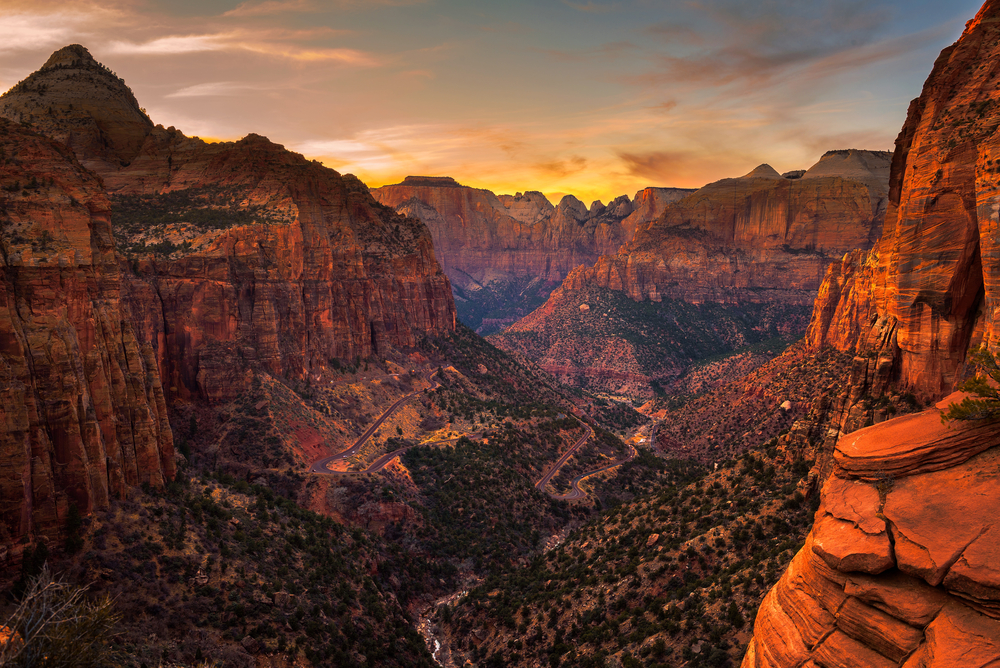
Looking to marvel at the best rock formations in Zion National Park? Nothing beats exploring the Canyon Overlook Trail. Although it’s quite short, this trail takes you 1,000 feet above the canyon floor, giving you panoramic views of Zion Canyon and the Virgin River below.
This trek is easy to navigate, as it has trail markings along the way. Once you reach the Great Arch, keep your eyes peeled for foraging wildlife among the towering sandstone cliffs.
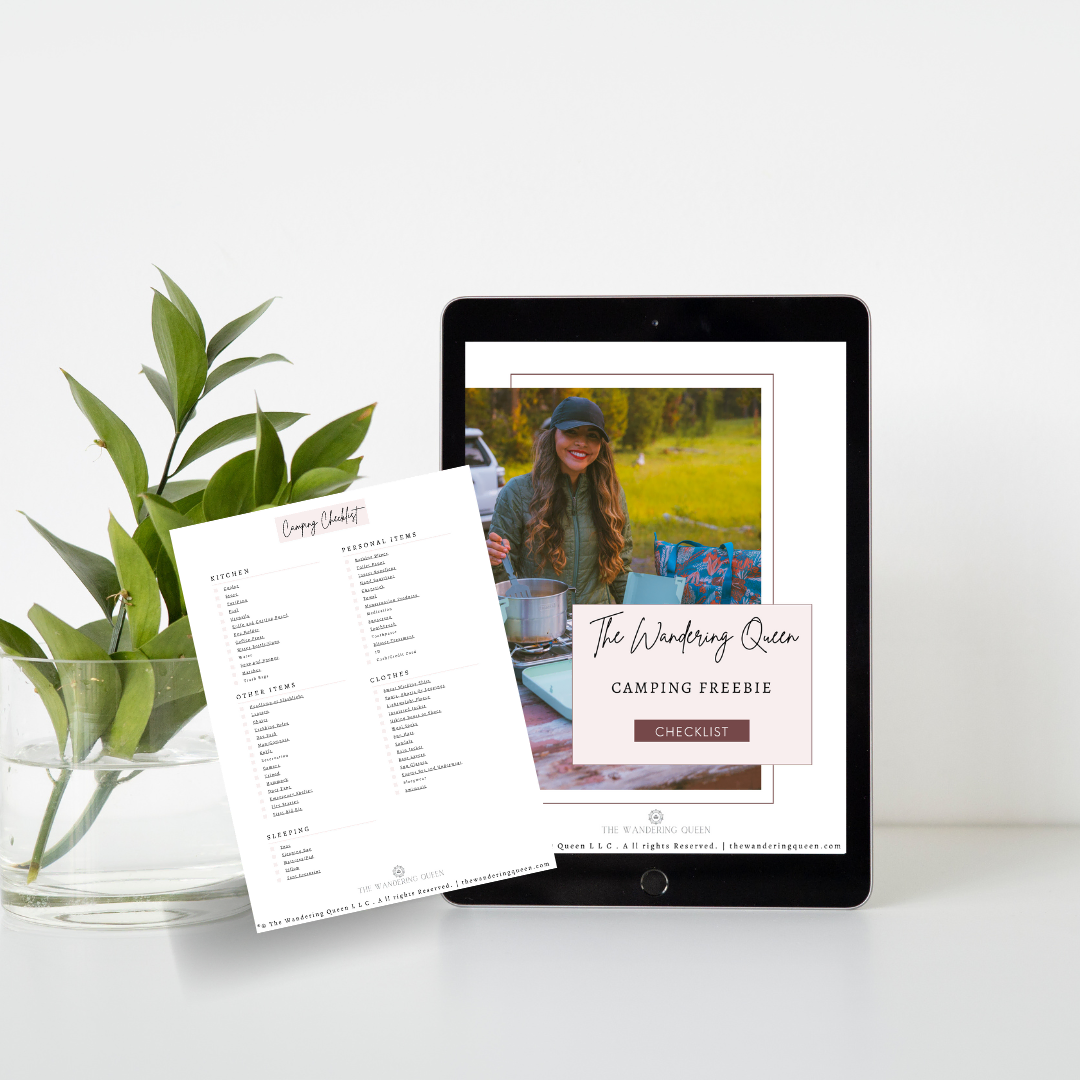
Get our free camping checklist
When you join our newsletter
Go Rock Climbing
Zion offers world-class rock climbing opportunities for both newbies and keen enthusiasts of all skill levels. Spring weather offers pleasant conditions for climbing. You’ll enjoy rappelling the park’s most dramatic sandstone cliffs and canyons without worrying about hot weather.
You’ll have several route choices. Angels Landing is a popular rock climbing trail, but there’s also Mount Isaac, The Sentinel, and Mountain of the Sun for you to explore.
Take on the Angels Landing Hike
- Distance: 4.3 miles (out and back)
- Elevation Gain: 1,827 feet
- Difficulty: Hard
- Trail Guide: Link
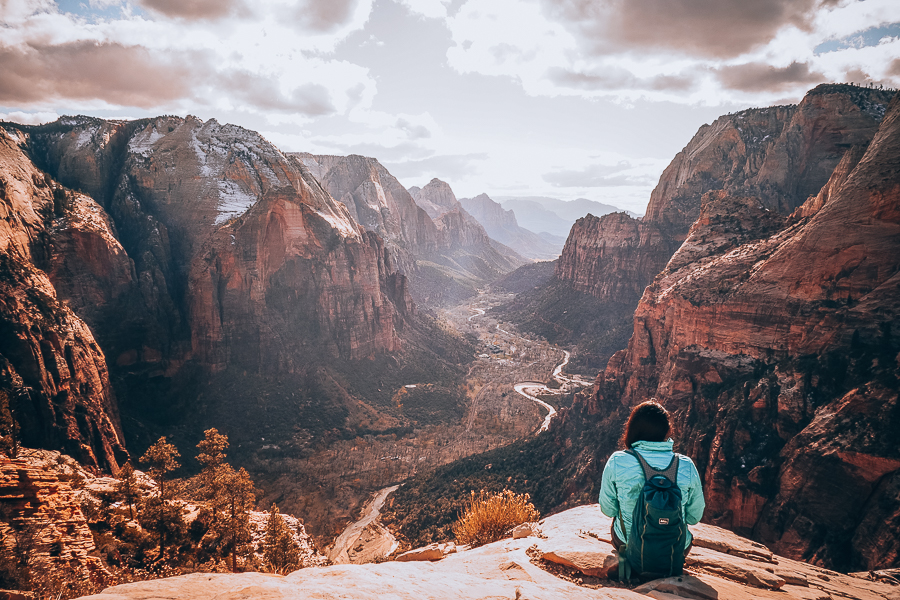
If you’re an adrenaline junkie looking for the most epic views in Zion National Park, then you’ll want to hike Angels Landing. This trail is the scariest hike in Zion. Why? It’s incredibly dangerous, and many people have fallen. So be very careful and hold on to the trail chains. >>>Get A Permit Here
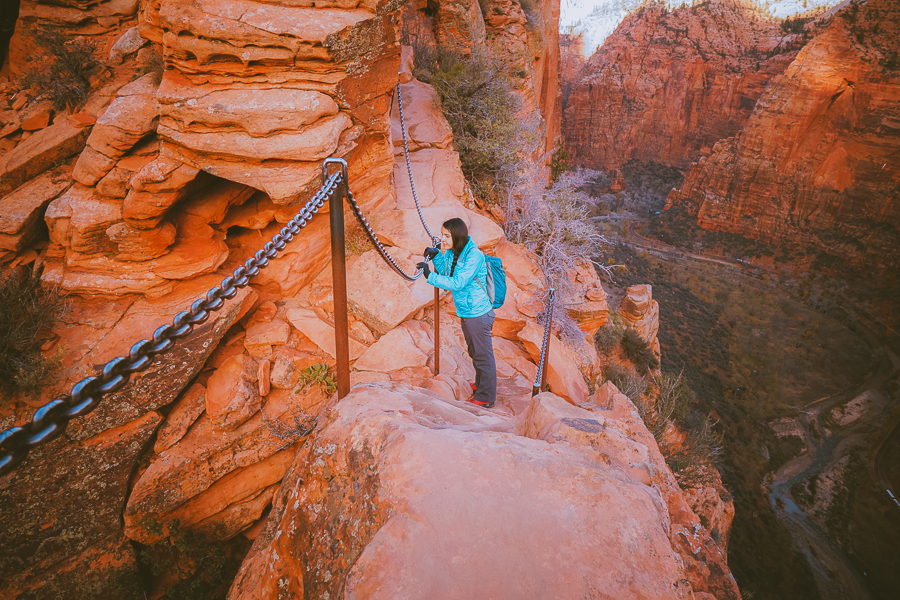
Walk the Emerald Pools Trail
- Distance: 3 miles (loop)
- Elevation Gain: 620 feet
- Difficulty: Moderate
- Trail Guide: Link
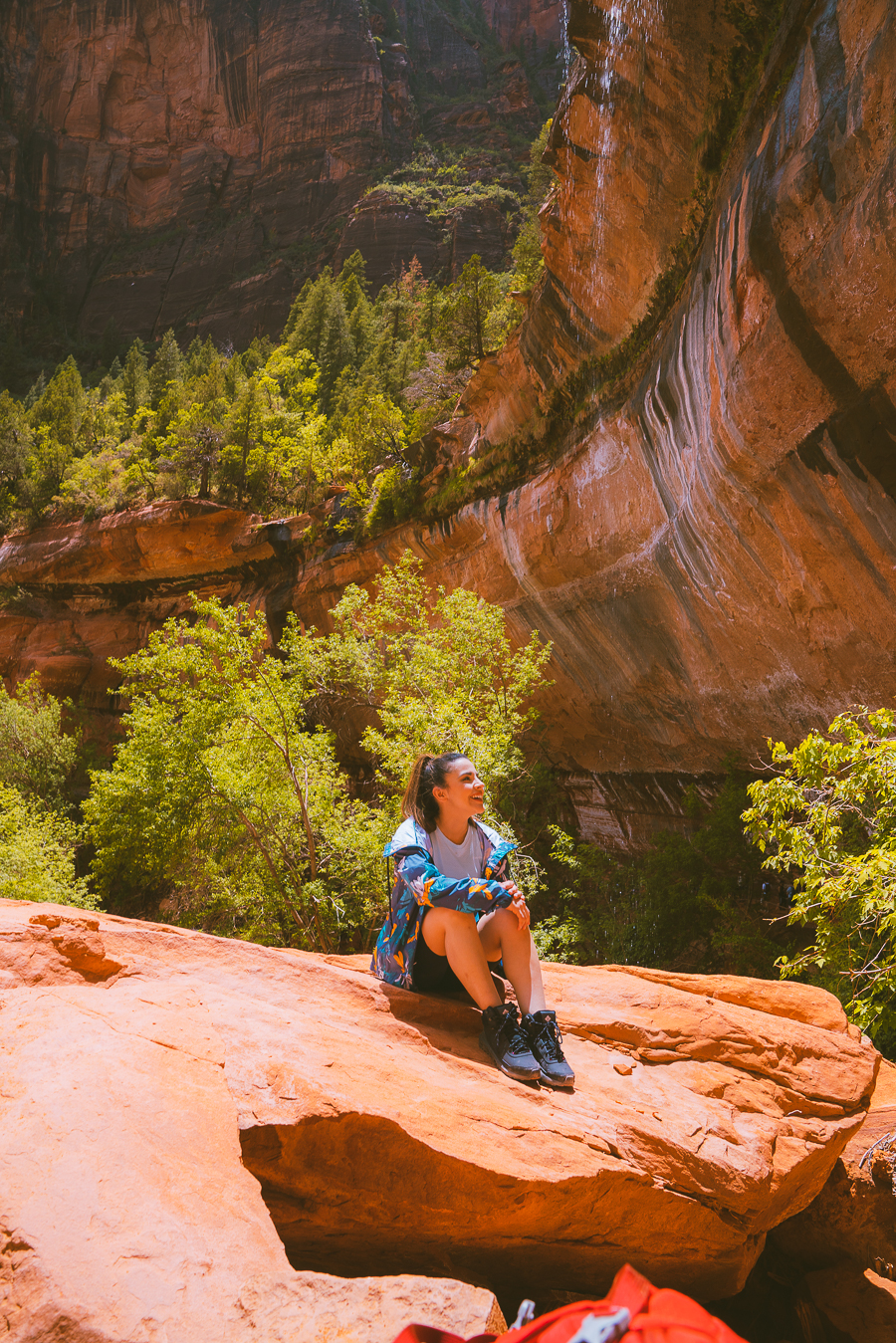
Considered one of the best hikes in Zion National Park, the Emerald Pools offer a leisurely hike that winds up to stunning emerald-colored pools nestled under towering cliffs. This trail showcases diverse landscapes, including lush greenery and cascading waterfalls.
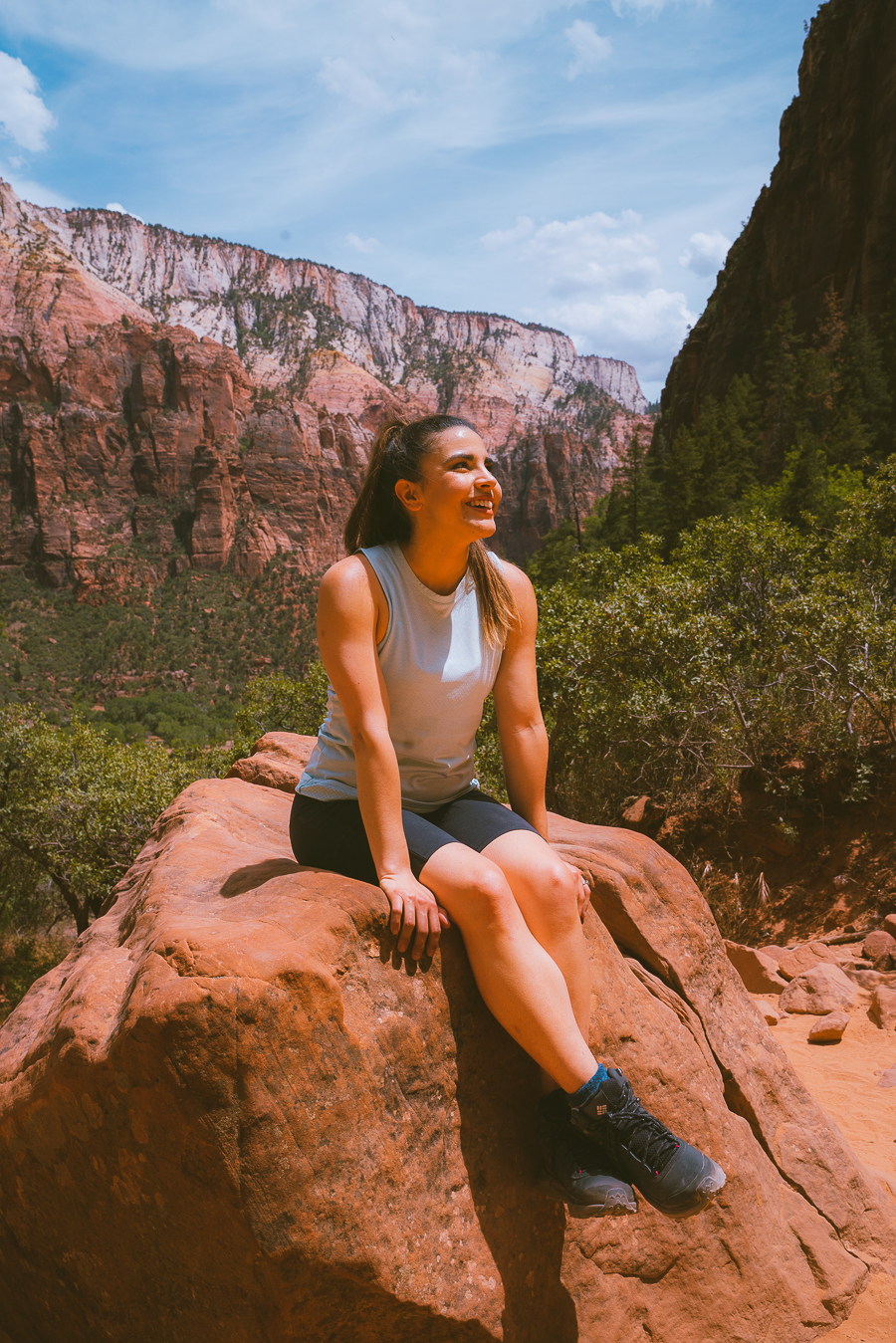
Visiting Zion National Park in Summer (May – September)
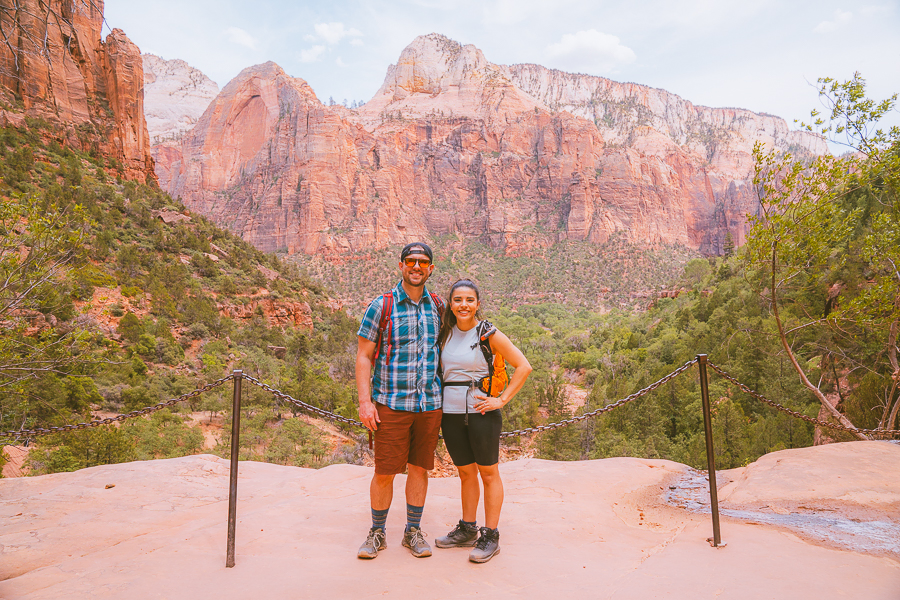
Summer is the busiest time to visit Zion, and it brings with it extreme heat and crowded parking lots. But most trails are open during this time, and the landscape is absolutely gorgeous. Be sure to carry plenty of water when hiking to avoid possible heat strokes.
Things to Do in Zion National Park in Summer
Besides having access to Zion’s best attractions, park facilities, like visitor centers, have the longest operational hours of the year. Expect average temperatures to hover above 100°F.
Explore The Narrows
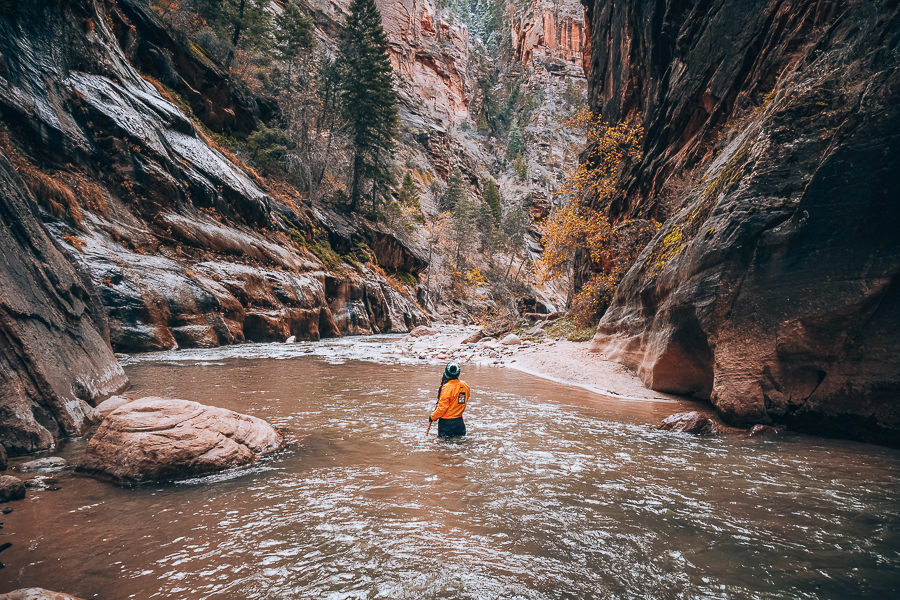
Are you looking for a unique hiking experience through the narrowest section of Zion Canyon? Wading through the Virgin River, The Narrows offers a once-in-a-lifetime experience to trek along a gorge with thousand-foot canyon walls on either side.
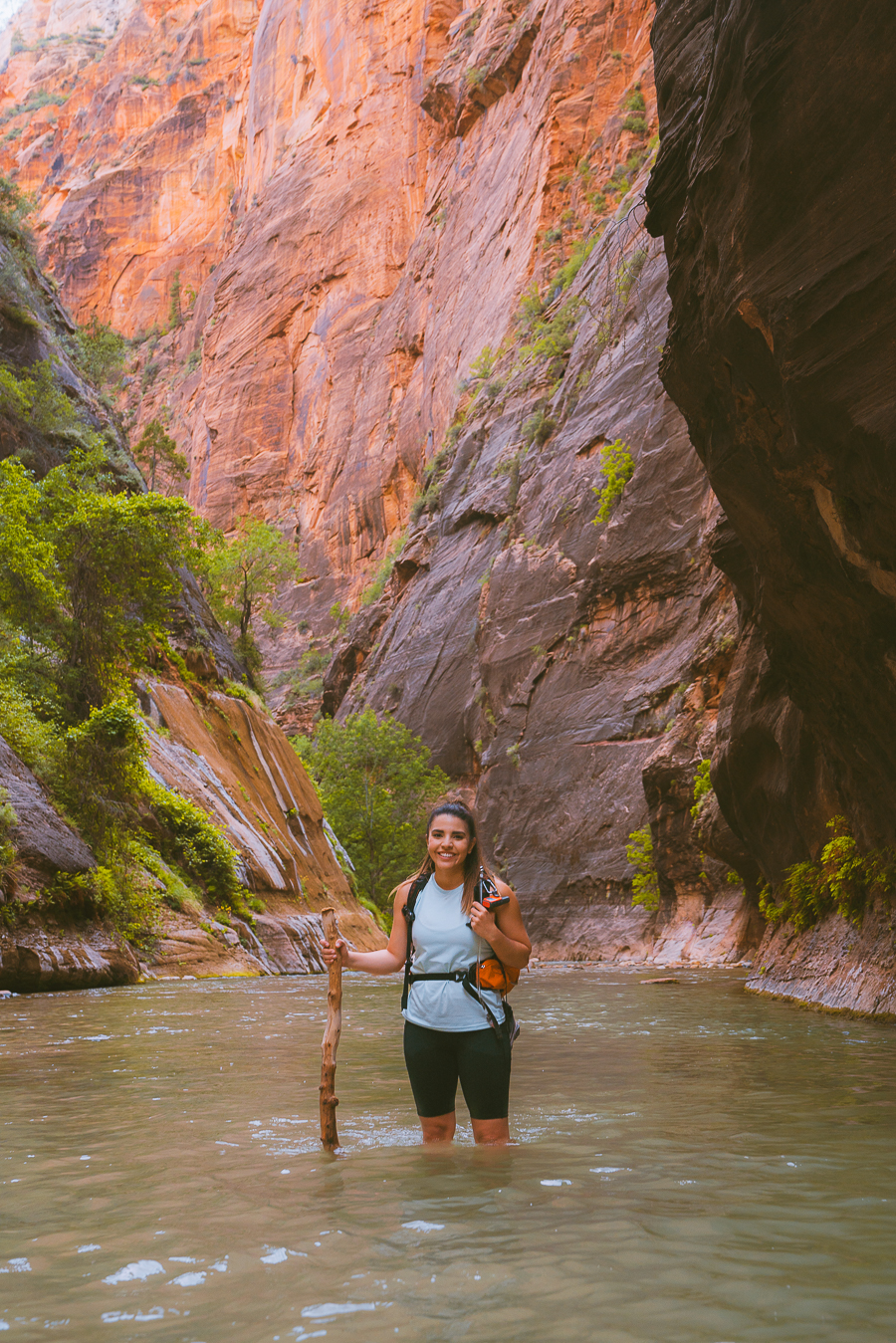

Note: Zion’s monsoon season begins in the summer, so be sure to check weather conditions before hiking The Narrows. Avoid trekking through this section of the park when it’s raining.
Take a Scenic Drive along Kolob Terrace Road
Want to escape the crowds and long queues at Zion’s most famous trailheads? Then, consider taking the scenic drive along Kolob Terrace Road. This route offers picturesque views of forests, meadows, and rugged red rock formations.
Unlike the Zion Canyon Scenic Drive, this road and as well as the Kolob Canyon Scenic Drive are always open to private vehicles even when the park shuttles are fully operational.
Download my free Outdoor Photography Guide
Go Tubing on the Virgin River
Cool off from the scorching summer temperatures by tubing down the Virgin River. This is a fun and refreshing way to experience Zion’s mesmerizing landscapes. As you leisurely float along the river, you’ll be inundated with stunning canyon scenery.
Enjoy Canyoneering in Zion’s Slot Canyons
Zion National Park is world-renowned for its breathtaking slot canyons. These offer thrilling canyoneering adventures with rappelling, scrambling, and wading through narrow passages. Along the way, you’ll get to see unique rock formations, hidden waterfalls, and serene pools.
Visiting Zion National Park in the Fall (October and November)
Fall is arguably the best time to visit Zion National Park. It brings cool temperatures ideal for hiking, but you might need layers to protect yourself from the swift weather changes. Vibrant fall foliage starts showing at higher elevations, slowly making its way down to Zion Canyon.
Things to Do in Zion National Park in the Fall
Fall weather is unpredictable, average temps typically vary by 30°F from day to day. While hiking trails are still open, the shuttle bus runs less frequently and for fewer hours of the day.
Hike the Observation Point Trail
- Distance: 7 miles (out and back)
- Elevation Gain: 702 feet
- Difficulty: Moderate
- Trail Guide: Link
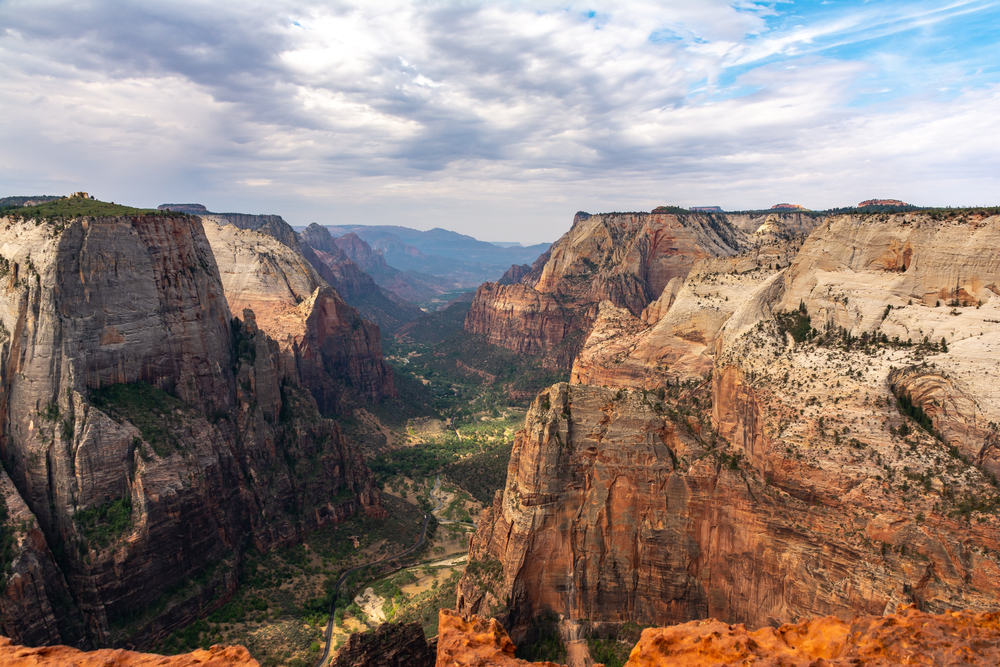
For the most jaw-dropping views of Zion Canyon, you’ll want to hike to Observation Point. This moderately challenging trail offers expansive views reaching as far as Angels Landing and the Virgin River. After reaching 1,000 feet above the canyon floor, the temperatures cool as the red walls tower over you.
Catch the Sunset at Lava Point Overlook
Serene and secluded, the Lava Point Overlook offers one of the most magical vistas in Zion National Park. With unrivaled kaleidoscopic sunsets, this Zion viewpoint is a great place to witness vibrant orange, red, pink, and purple hues bouncing off of the rugged terrain.
Explore The Subway
- Distance: 7.2 miles (out and back)
- Elevation Gain: 1,348 feet
- Difficulty: Hard
- Trail Guide: Link
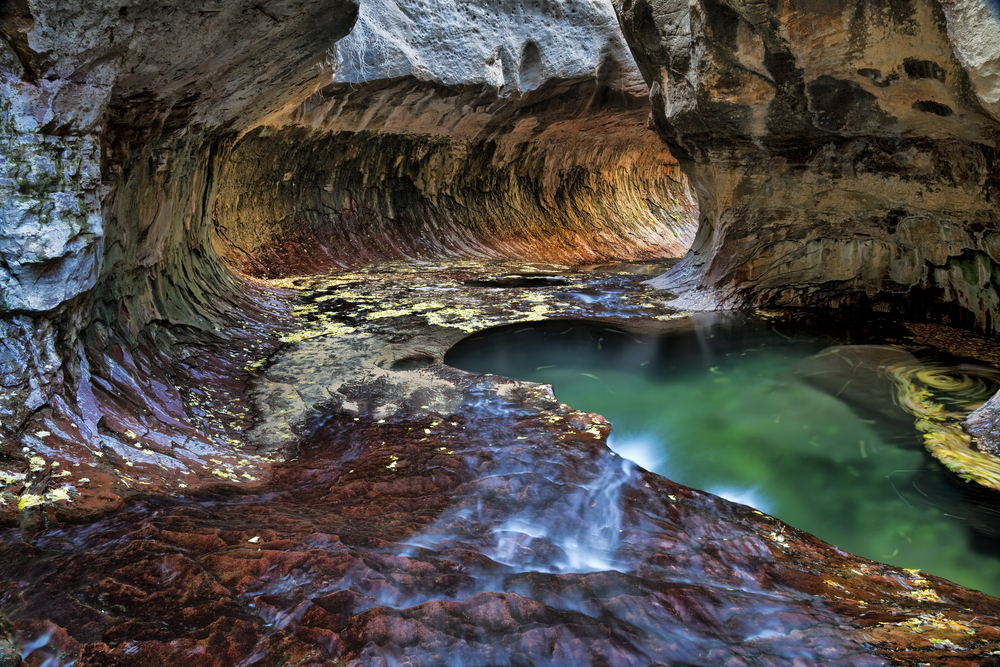
The Subway is a unique slot canyon famous for its curved walls and emerald pools. With pleasant weather and fewer crowds, early fall provides optimal conditions to explore the Subway. You’ll navigate through narrow passages, climb down waterfalls, and swim in pristine pools.
Take a Stab at Nature Photography
Fall is undeniably the best time to visit Zion National Park for its colorful natural scenery. Zion features many scenic landscapes, viewpoints, hiking trails, and hidden gems to find the perfect shot. The fall foliage beautifully contrasts the red walls, making for an epic snap.
Visiting Zion National Park in Winter (December – February)
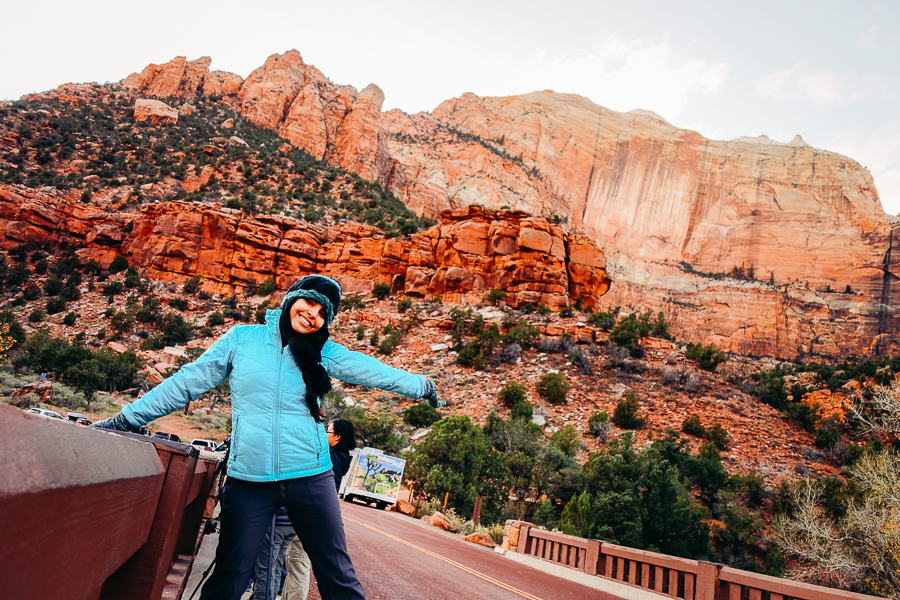
Winter is the least visited time in Zion, meaning you’ll have the best national park in Utah all to yourself. The season is typically wet and cold, with average high temperatures ranging between 50°F and 60°F, but at lower elevations, the snow swiftly clears after winter storms.
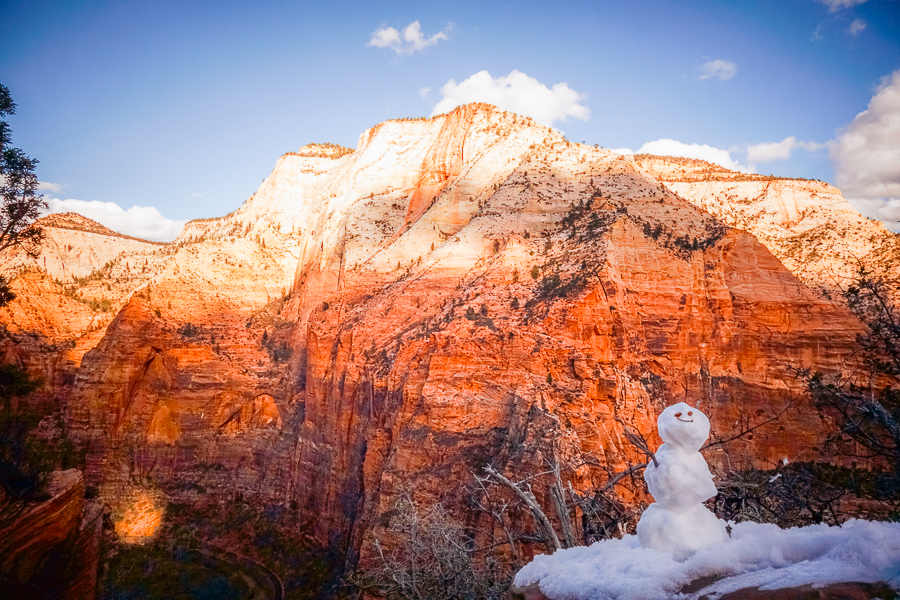
Things to Do in Zion National Park in Winter
Unfortunately, many of the hiking trails close for winter due to the possibility of falling ice, but the silver lining is that the roads are often quickly plowed. The town shuttle is only available during popular holiday weekends like Thanksgiving, Christmas, and New Year’s Day.

Top Tip: There are some road closures in winter. If you are visiting during this time of year, get more information about the roads at the visitor center before wandering into the park.
Go Winter Hiking in Zion Canyon
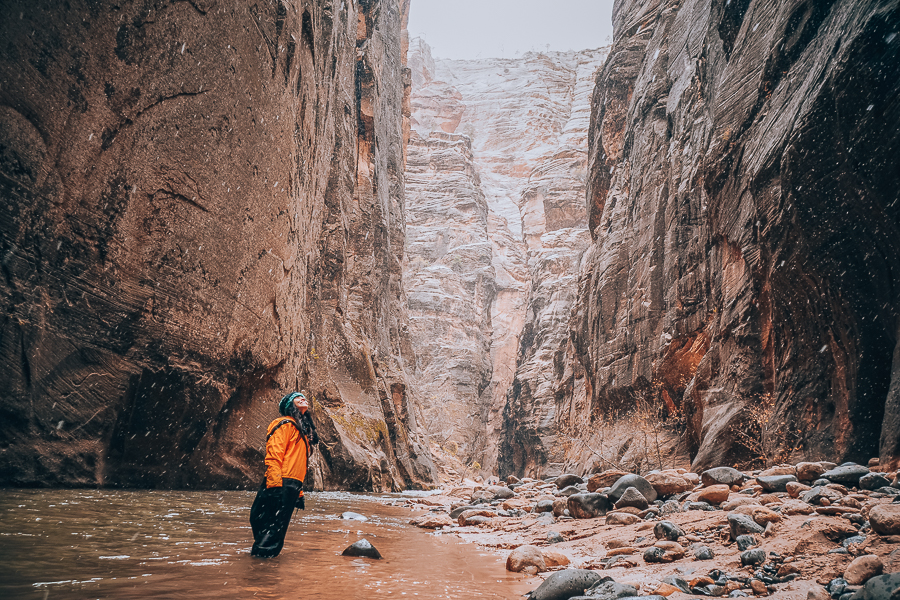
Winter hiking in Zion Canyon offers solitude and tranquility amidst snow-dusted landscapes. While some trails close during this time, others, like the Riverside Walk, Weeping Rock, and the Lower Emerald Pools, experience some rays of sun, making them ideal to explore.
Take a Scenic Drive Along Zion-Mount Carmel Highway
If you’re looking for a picturesque drive through stunning winter landscapes and snowy red rock formations, then the Zion-Mount Carmel Highway is your best bet. It offers access to overlooks and trailheads, allowing you to stop or take short walks as you enjoy the scenery.

PS: Winter is also a great time to visit the Zion Human History Museum.
Enjoy Winter Wildlife Watching
Winter provides a unique opportunity for wildlife viewing in Zion National Park, with animals like bighorn sheep and mule deer more visible against the snowy backdrops. You can spot several of Zion’s wildlife at an overlook along a scenic drive or via a hike on the quiet trails.
Explore the Checkerboard Mesa
Characterized by its distinctive pattern of horizontal and vertical cracks, the Checkerboard Mesa is one of the most unique geological formations in the national park. You’ll have clear views of the mesa without the obstruction of foliage, so don’t forget to bring your camera.
Zion National Park Best Time to Visit: FAQs
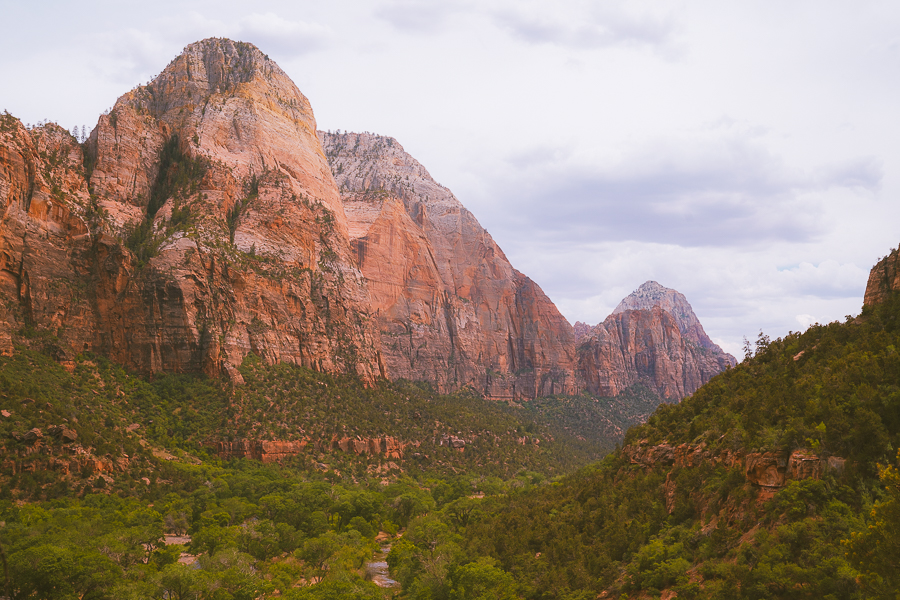
If you’re still uncertain about the best time to explore Utah’s most visited national park, here are a few commonly asked questions to hopefully give you more clarity.
What Is the Best Month to Visit Zion National Park?
Zion National Park in April offers the best of all things, from hiking to rock climbing and river tubing; you can do it all. But if you can’t make it, then anytime between April and November would be the best time to visit.
When Is the Best Time to Visit Zion National Park to Avoid Crowds?
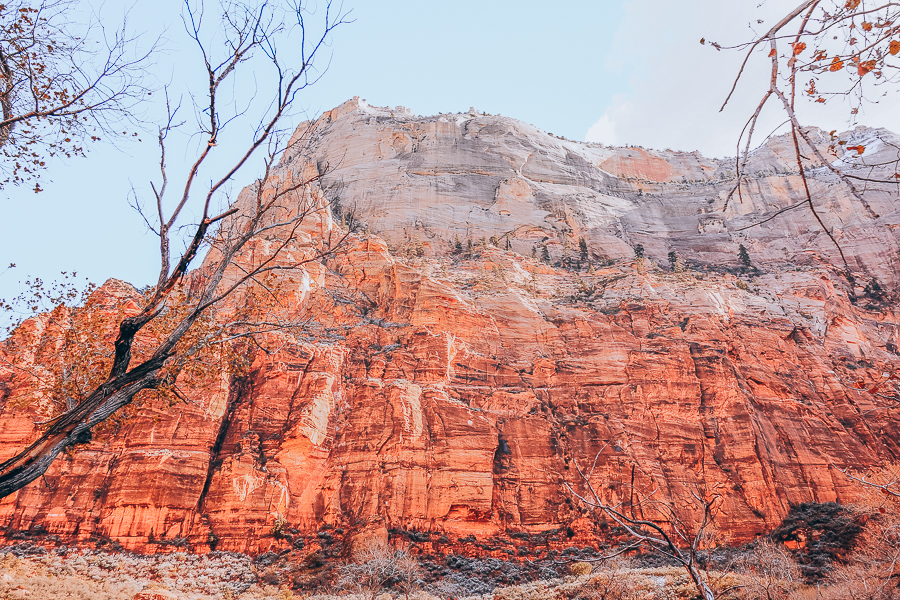
Late fall and early spring typically experience fewer crowds than in the summer, but overall, winter is the best time to visit Zion if you want the national park all to yourself.
How Many Days Do You Need in Zion National Park?
The number of days required to explore the national park also depends on the season. If you’re visiting Zion in the summer, you’ll need 4 to 5 days to explore, given the long queues. In spring, fall, and winter, you can easily see Zion’s top attractions in just 2 to 3 days.
Best Time of Year to Visit Zion National Park | Wrapped Up
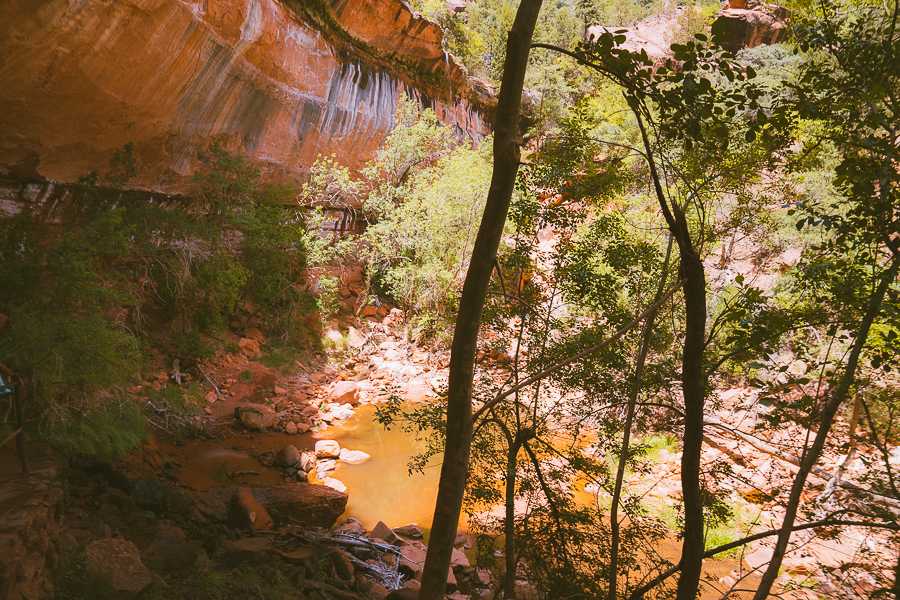
Zion is one of the many national parks in the US that are open all year round. However, spring and fall are generally considered the best times to visit due to smaller crowds, colorful landscapes, and accessibility to plenty of hiking trails.
Whether you’re looking for a leisurely ride along the Zion Canyon Scenic Drive or keen on tubing down the Virgin River during Spring Break, this Utah national park has you covered.
Next Read: Since you’ll be staying for a few days, be sure to read up on where to stay in Zion National Park.

